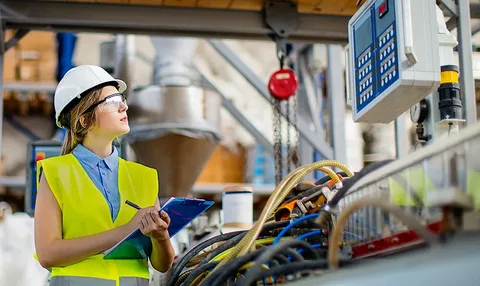Australia’s commitment to workplace safety reflects in its stringent regulations and adoption of innovative solutions like safety management applications. The nation’s emphasis on employee well-being underscores the significance of cutting-edge safety measures. The landscape of workplace safety in Australia is undergoing a transformative shift, largely propelled by technology integration. Amid this evolution, the role of the best safety management software in Australia has emerged as a linchpin in fostering secure work environments and safeguarding the well-being of employees. In the dynamic landscape of workplace safety, a transformative approach is emerging through empowering frontline workers. These individuals, entrusted with the pulse of daily operations, play a pivotal role in the overall safety ecosystem. This article sheds light on the strategic endeavour of elevating the engagement of frontline workers to enhance workplace safety. Frontline workers possess invaluable insights garnered from their direct involvement in operational processes. Recognising their significance, empowerment surfaces as a pivotal strategy to enhance safety culture. Organisations must implement frontline empowerment and state-of-the-art safety technology, including safety management software, to guarantee a safer and more secure work environment. It’s crucial to take action and implement these measures to ensure the well-being of employees and the company’s success.
Understanding the Frontline:
Frontline workers occupy a pivotal position within an organisation, serving as the pulse of daily operations. Their proximity to the ground level gives them unique insights into potential hazards and operational challenges. Empowering frontline workers involves recognising their invaluable contributions and providing avenues for them to engage in safety initiatives actively. By tapping into their collective wisdom and experiences, organisations can harness a potent catalyst for transformative change in safety practices.
Breaking Down Barriers:
The traditional hurdles that hindered active safety participation are now being dismantled through innovative solutions. Integrating user-friendly mobile applications is a testament to this paradigm shift. These applications provide a direct channel for frontline workers to report hazards, incidents, and near-misses promptly and accurately. The power of accessibility lies in its ability to enable workers to log events in real-time, capturing crucial details without delay. This immediacy ensures accurate reporting and fosters a culture of prompt incident management.
From Frustration to Familiarity:
Frontline workers have historically encountered frustration when engaging with complex safety reporting forms and procedures. However, the modern approach is centred around simplification and familiarity. Contemporary workplace safety applications are designed with intuitive interfaces, translating intricate processes into user-friendly interactions. This transformation from frustration to familiarity is pivotal in reshaping how frontline workers perceive safety participation. The shift cultivates a sense of ease and comfort, encouraging active engagement and fostering a more inclusive safety culture.
A Personalised Experience:
Recognising that one size does not fit all, innovative safety solutions offer personalised experiences for frontline workers. Each worker can access a tailored app experience that aligns with their specific tasks and responsibilities. This personalisation simplifies their engagement and imbues a sense of ownership in the safety process. When individuals feel that their contributions are valued and catered to, they are more likely to participate and take responsibility for workplace safety actively.
The Mobile Revolution:
Integrating mobile technology into workplace safety practices is a natural evolution in an era dominated by smartphones and instant connectivity. The modern workforce is accustomed to using mobile devices for many tasks, from communication to task management. Harnessing this mobile revolution for safety engagement ensures that safety practices seamlessly integrate into the daily routines of frontline workers. Safety reporting becomes as routine as checking social media or managing finances, making it an intrinsic aspect of their professional lives.
Bridge the Gap:
The digital transformation era has bridged the gap between frontline workers and management, facilitating real-time communication and collaboration. Digital platforms provide an open dialogue between these two crucial organisation segments. Frontline workers can now voice their concerns, share safety suggestions, and provide feedback directly to decision-makers. This collaboration instils trust and ensures that safety concerns are addressed promptly. When frontline workers feel heard and valued, their engagement in safety initiatives becomes more meaningful and impactful.
From Reactive to Proactive:
Empowering frontline workers transcends immediate safety reporting. It encompasses a cultural shift from reactive responses to proactive engagement. When workers are equipped with the tools and empowerment to contribute to safety discussions and initiatives, they become proactive advocates for a safer work environment. This shift from reacting to incidents to anticipating and preventing them signifies a profound transformation in safety culture. It’s a journey from treating safety as an isolated obligation to embedding it as an integral component of daily operations.
Impact Beyond the Workplace:
Empowering frontline workers ripples beyond the confines of the workplace, creating a broader impact. A safer work environment translates to enhanced well-being not only for the workers themselves but also for their families and communities. The positive influence extends to the organisation’s reputation, fostering a culture of responsibility and care. The holistic benefits of empowering frontline workers radiate outward, contributing to a harmonious and secure ecosystem that transcends organisational boundaries.
Conclusion: The journey toward empowering frontline workers and enhancing workplace safety participation reflects a forward-looking paradigm shift. The fusion of Australia’s best safety management software and strategic empowerment creates a harmonious blend of human expertise and technological prowess. As organisations embrace this collaborative approach, the landscape of workplace safety stands poised for transformation. The collective efforts of empowered frontline workers, coupled with the capabilities of advanced safety software, yield a future where safety is not just a practice but an ingrained aspect of organisational culture. This integration resonates beyond workplace boundaries, resonating with the well-being of employees and the organisation’s overall success. The safety management software is a guiding light, illuminating the path to a safer, more resilient tomorrow.





